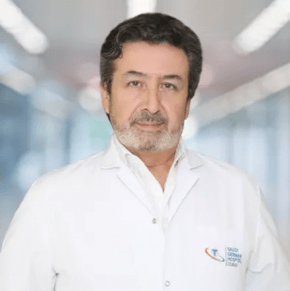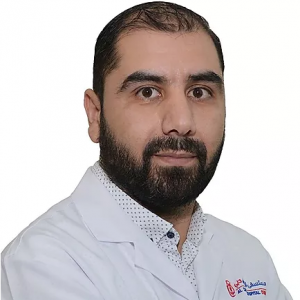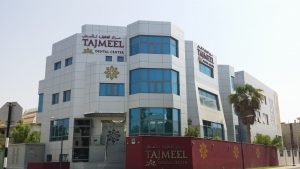Ankle Arthroscopic Surgery
Ankle arthroscopy is a minimally invasive surgical technique that utilizes the technology of fiberoptics, magnifying lenses, and digital video monitors to allow the surgeon to directly visualize the inside … Read More
Top Doctors For Ankle Arthroscopic Surgery Treatments
Top Hospitals For Ankle Arthroscopic Surgery Treatments
Ankle Arthroscopic Surgery
How is Ankle Arthroscopy Performed?
Ankle arthroscopy is generally performed as an outpatient surgery under general anesthesia with or without a regional pain block or epidural anesthetic with sedation. After adequate anesthesia is established, a tourniquet is applied to the leg, and the leg is prepped and draped in a sterile fashion. Mechanical distraction devices are sometimes used to help surgeons temporarily enlarge the potential space of the ankle. After the foot and ankle are appropriately positioned, at least two approximately 0.5mm incisions are made in the ankle. These incisions become the entry sites into the ankle, or portals, for the arthroscopic camera and instruments. These portals are placed strategically in an effort to avoid vessels and nerves. The incisions are made in the front or back of the ankle, or a combination of these. Sterile fluid is then allowed to flow through the ankle to further open the joint. The camera and instruments can then be exchanged between portals to perform the surgery. At the conclusion of the procedure, small sutures are placed in the skin to close the portals. A sterile compressive dressing, and sometimes a splint or boot, are then applied. The patient is brought to the recovery area and is usually discharged home the same day with specific weight-bearing and dressing care instructions.
Causes
The list of problems that this technology can be used for is:
• Osteochondral defect of the talus (also referred to as osteochondritis dessicans, OCDs, osteochondral fractures)
• Anterior Ankle Impingement (also referred to as “athlete’s ankle” or “footballer’s ankle”) and Anterolateral Ankle Impingement
• Posterior Ankle Impingement
• Synovitis
• Loose Bodies
• Arthrofibrosis
• Infection
• Ankle Fractures
• Unexplained Ankle Symptoms
• Tibiotalar Arthritis
FAQ
Why is this treatment?
Ankle Anthroscopy Surgery is small incision surgery using Anthroscope i.e. camera and fibro-optic cord and instruments indicated in conditions like osteochondral lesion of Talus, Ankle fracture, Ankle Anthrodesis and Ankle instability. It has fewer complication than open surgery.
What are the complications that can arise after the treatment?
The most important complication arising from this treatment is neurological injury. Other complication include Pain, vascular injury, joint fistula, Infection, Bleeding, Instrument breakage, Deep vein thrombosis, Compartment syndrome, Chest and lung complication.
How long is the recovery after the treatment?
The recovery time generally varies from 4 weeks to 8 weeks that means one can return to work in 4-8 weeks. Recovery time varies from profession and immobilization after surgery.
How many days of hospitalization is required for this treatment?
Generally 2-4 days of hospitalization is required. Patient is advised bedrest during hospital stay and recovery period.
What are the precautions that I have to follow after this treatment?
Patient is asked to keep the legs elevated above heart by placing pillow below legs in order to decrease swelling.
Patient is asked to use walking boots and avoid excessive activities so that inflammation can be controlled. Physical therapy should be started only after wound is healed and postop pain subsided.
What are the indications for this treatment?
-Anterior Ankle Impingement
-Posterior Ankle Impingement
-Osteochondral Lesion of Talus
-Ankle Fracture and Chondral Injuries
-Ankle Arthodesis
-Ankle Instability
-Arthrofibrosis
-Septic Arthritis
What is Anterior Ankle Impingement?
It is pain in ankle in front due to repeated activities i.e. impingment. Pathology is presence of osteophytes in anterior tibia and talus diagnosed on anteromedial XRAY of ankle. Treatment consists of activity modification, Immobilization and rehabilitation and Ankle Anthroscopic surgery.
What is Posterior Ankle Impingement?
Patient with posterior ankle Impingement have pain and tenderness on deep posterior aspect of ankle , pain on forced plantarflexion due to hypertrophy of posterior process of talus and treatment consist of fluoroscopic guided injection in affected area.
What is the outcome of this treatment?
Ankle Anthroscopic Surgery is minimally invasive with good outcome. Documented Cure rate of some disease are as follows:
-Anterior Ankle Impingement reported success rate is 73% to 96%
-Septic Arthritis cure rate is almost 91%
Is Physiotherapy and Exercises are needed after this treatment?
Yes Physiotherapy and Exercises are advised after this treatment. It should be started only after wound has healed. Special walking boots are also prescribed after surgery.
Can I play Football after Surgery?
Usually greater recovery time is required for Athletes but one can play football after complete recovery unless contraindicated.
How long will the operation last?
The operation generally last for 40-90 mins. It is generally done under General Anesthesia but in some circumstances local block may be preferred in addition.
What are advantages of this treatment?
• It is minimally invasive
• Outcome of treatment is pretty good
• Most of daily activities are preserved after treatment
• Athletes can continue sports unless contraindicated by Surgeon.
How are these conditions diagnosed?
The conditions can be diagnosed by X-ray and MRI. If MRI is unsatisfactory then intraarticular injection anesthetic is given if relived on injection intraarticular pathology is confirmed which can be treated on Anthroscopic Surgery.




































![DR [PROF.] KARL MILLER](https://anavara.com/wp-content/uploads/2021/10/DR-PROF.-KARL-MILLER-244x300.jpg)








































































































